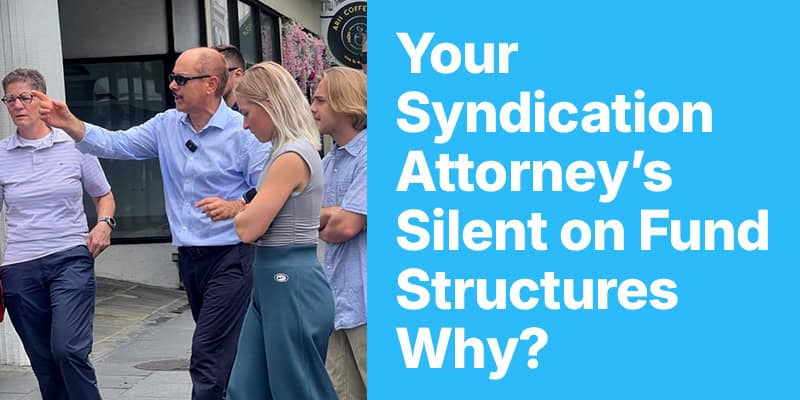Why Your Attorney Isn’t Talking Real Estate Fund Structures—And Why You Should Be Asking
Introduction When you sit down with your real estate attorney, the conversation usually focuses on the details of your current deal. But there’s one question most attorneys don’t raise—whether your business is ready for a fund structure instead of another syndication. While attorneys are experts in compliance and documentation, they may not push you to consider the bigger strategic leap a fund offers. Let’s explore why this conversation gets overlooked—and why you should make it a priority if you want to grow your real estate business. Attorneys Are Transactional—You Need to Think Strategically Most attorneys are wired to help you close your immediate transaction: Draft PPMs and subscription docs Ensure you select the right SEC exemption File the right documents with the right agencies But unless you bring up fund structures, they’re unlikely to suggest you look beyond your current syndication model. Why Fund Structures Often Go Unmentioned Attorneys follow your lead: If you ask for a syndication, they assume that’s what you want. They’re focused on compliance, not growth: Their job is to keep you out of trouble, not help you scale. Funds are more complex: Not every sponsor is ready for the higher bar that fund management brings. Why You Should Be Asking About Fund Structures Scale Your Business: A fund gives you a pool of capital to deploy across multiple deals. This means you can move quickly when opportunities arise. Attract Sophisticated Investors: Funds attract bigger checks from investors who want diversification and trust you with broader strategy. Diversification: Funds spread risk across several properties, making your offering more attractive to risk-conscious investors. Repeatable Process: With a fund, you can create a business platform, not just a series of one-off deals. Read more about fund vs. syndication here. How to Start the Conversation Tell your attorney you want to understand fund structures—even if you’re just exploring. Ask them to outline legal, compliance, and operational differences between syndications and funds. Find out what additional support or advisors you might need. Want practical examples and a step-by-step action plan? Register for my free on-demand training to learn how to launch your own real estate investment fund in just 21 days. Conclusion Your attorney’s job is to serve your legal needs, but your job is to think ahead. By proactively asking about fund structures, you can unlock new opportunities and build a more scalable, resilient business.










